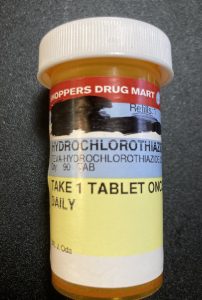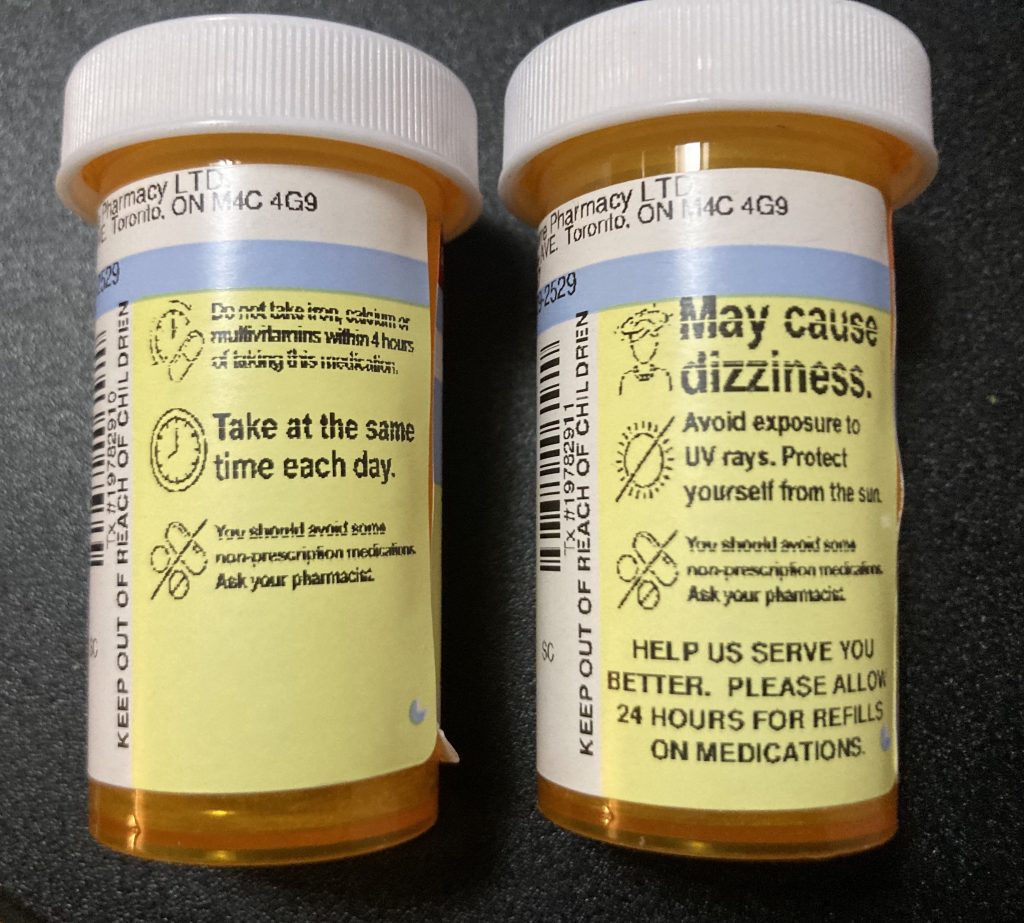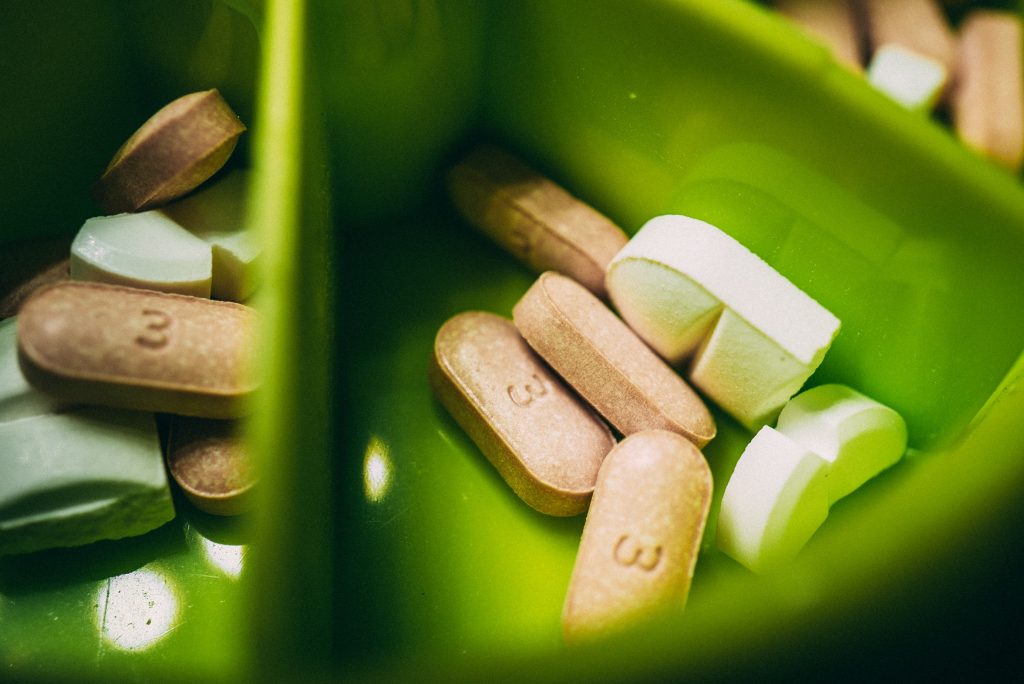6.5 Drug Interactions: With other Drugs and Food

When we are prescribed medications it is done purposefully for a health issue/challenge that we have. It is important to understand that all medications are created to be taken a certain way, for some, it is important that it be taken at a certain time (morning, evening), and specific instructions for that medication. (i.e. take in the morning, don’t take with ….).
People often combine foods. For example, chocolate and peanut butter might be considered a tasty combination. But eating chocolate and taking certain drugs might carry risks. When taking monoamine oxidase (MAO) inhibitors, such as Nardil (phenelzine) or Parnate (tranylcypromine) and eating chocolate, it could be dangerous.

MAO inhibitors treat depression, and if you eat an excessive amount of chocolate after taking an MAO inhibitor may experience a sharp rise in blood pressure.
Other foods that should be avoided when taking MAO inhibitors: are aged cheese, sausage, bologna, pepperoni, and salami. These foods can also cause elevated blood pressure when taken with these medications.

Drug Interaction Definition and Types of Drug Interactions
A drug interaction is when one or more of your medications affect how other medications you may be taking work.
Here are 3 types of drug interactions:
Drug-drug interaction is when 2 or more drugs work together to produce a reaction and sometimes have unexpected side effects. Antibiotics can increase or decrease the effects of other medications used to treat cardiovascular disease, birth control or diabetes.
Drug-food interaction is when you take food or a beverage with 1 or more drugs. For example: when you have calcium-rich foods like milk, yogurt, and cheese, this can interfere with certain antibiotics and prevent the antibiotic from being absorbed in your body.
Drug-condition interaction is when you have an existing medical condition and when 1 or more drugs cause a reaction. For example, your blood pressure may spike if you have hypertension and take certain nasal decongestants.
Source: “Drug Interaction and Your Health “ by Ontario College of Pharmacists
Drug Use in Seniors
The dangers of polypharmacy (defined as the use of 5 or more medications daily by an individual) for seniors are seen in doctors’ offices and hospitals. The more medications they consume, the more likely seniors are to require urgent medical attention or go to emergency departments. Seniors are five times more likely than younger Canadians to be hospitalized as a result of an adverse drug reaction (ADR). In 2011, over 27,000 Canadian seniors — that is, one in 200 — had an ADR-related hospitalization.

Drugs with Food and Beverages
Consequences of drug interactions with food and beverages may include delayed, decreased, or enhanced absorption of a medication. Food can affect the bioavailability (the degree and rate at which a drug is absorbed into someone’s system), metabolism, and excretion of certain medications.
Examples of drug interactions with food and beverages
Alcohol: If you are taking any sort of medication, it’s recommended that you avoid alcohol, which can increase or decrease the effectiveness of many drugs.
Grapefruit juice: Grapefruit and grapefruit juice is often mentioned as a product that can interact negatively with drugs, but the actual number of drugs the juice can interact with is less well-known. Grapefruit juice shouldn’t be taken with certain blood pressure-lowering drugs or cyclosporine for the prevention of organ transplant rejection. That’s because grapefruit juice can cause higher levels of those medicines in your body, making it more likely that you will have side effects from the medicine. The juice can also interact to cause higher blood levels of the anti-anxiety medicine Buspar (buspirone); the anti-malaria drugs Quinerva or Quinite (quinine); and Halcion (triazolam), a medication used to treat insomnia. To learn more, read The Effects of Grapefruit and its Juice on Certain Drugs – Health Canada.

Licorice: This would appear to be a fairly harmless snack food. However, for someone taking Lanoxin (digoxin), some forms of licorice may increase the risk for Lanoxin toxicity. Lanoxin is used to treat congestive heart failure and abnormal heart rhythms. Licorice may also reduce the effects of blood pressure drugs or diuretic (urine-producing) drugs, including Hydrodiuril (hydrochlorothiazide) and Aldactone (spironolactone).
Chocolate: MAO inhibitors are just one category of drugs that shouldn’t be consumed with excessive amounts of chocolate. The caffeine in chocolate can also interact with stimulant drugs such as Ritalin (methylphenidate), increasing their effect, or decreasing the effect of sedative-hypnotics such as Ambien (zolpidem).
Medications can often interact with food – something that many people aren’t aware of. “Food can affect the absorption of drugs,” says Sean Simpson, a pharmacy owner in Niagara-on-the-Lake, Ontario and chair of the Ontario Pharmacists Association board of directors. “Certain foods can also affect how well you tolerate them.”
Simpson says you should visit your pharmacy to discuss your medications with a pharmacist and to determine if there are any food interactions with the medications you are taking. “Ask: ‘Are there any specific foods that I should avoid?’” suggests Simpson.
For more information for seniors
Drugs with Dietary Supplements
Research has shown that 50 percent or more of Canadian adults use dietary supplements on a regular basis.
The law defines dietary supplements in part as products taken by mouth that contain a “dietary ingredient.” Dietary ingredients include vitamins, minerals, amino acids, and herbs or botanicals, as well as other substances that can be used to supplement the diet.
Examples of drug interactions with dietary supplements

St. John’s Wort (Hypericum perforatum): This herb is considered an inducer of liver enzymes, which means it can reduce the concentration of medications in the blood. St. John’s Wort can reduce the blood level of medications such as Lanoxin, the cholesterol-lowering drugs Mevacor and Altocor (lovastatin), and the erectile dysfunction drug Viagra (sildenafil).
Vitamin E: Taking vitamin E with a blood-thinning medication such as Coumadin can increase anti-clotting activity and may cause an increased risk of bleeding.
Ginseng: This herb can interfere with the bleeding effects of Coumadin. In addition, ginseng can enhance the bleeding effects of heparin, aspirin, and nonsteroidal anti-inflammatory drugs such as ibuprofen, naproxen, and ketoprofen. Combining ginseng with MAO inhibitors such as Nardil or Parnate may cause a headache, trouble sleeping, nervousness, and hyperactivity.
Ginkgo Biloba: High doses of the herb Ginkgo biloba could decrease the effectiveness of anticonvulsant therapy in patients taking the following medications to control seizures: Tegretol, Equetro or Carbatrol (carbamazepine), and Depakote (valproic acid).
Two out of every three patients who visit a doctor leave with at least one prescription for medication, according to a 2007 report on medication safety issued by the Institute for Safe Medication Practices. Close to 40 percent receive prescriptions for four or more medications. And the rate of adverse drug reactions increases dramatically after a patient is on four or more medications.
Drug-drug interactions have led to adverse events and withdrawals of drugs from the market, according to an article on drug interactions.
However, market withdrawal of a drug is a fairly drastic measure. More often, an issue with an alert warning the public and health care providers about risks as the result of drug interactions.
Examples of drug interactions with other drugs
Cordarone (amiodarone): taking Cordarone to correct abnormal rhythms of the heart and the cholesterol-lowering drug Zocor (Simvastatin). Patients taking Zocor in doses higher than 20 mg while also taking Cordarone run the risk of developing a rare condition of muscle injury called rhabdomyolysis, which can lead to kidney failure or death. “Cordarone also can inhibit or reduce the effect of the blood thinner Coumadin (warfarin),” said Huang. “So if you’re using Cordarone, you may need to reduce the amount of Coumadin you’re taking”.
Lanoxin (digoxin): “Lanoxin has a narrow therapeutic range. So other drugs, such as Norvir (ritonavir), can elevate the level of Lanoxin,” says Huang. “And an increased level of Lanoxin can cause irregular heart rhythms.” Norvir is a protease inhibitor used to treat HIV, the virus that causes AIDS.
Antihistamines: Over-the-counter (OTC) antihistamines are drugs that temporarily relieve a runny nose, or reduce sneezing, itching of the nose or throat, and itchy watery eyes. If you are taking sedatives, tranquillizers, or a prescription drug for high blood pressure or depression, you should check with a doctor or pharmacist before you start using antihistamines. Some antihistamines can increase the depressant effects (such as sleepiness) of a sedative or tranquillizer. The sedating effect of some antihistamines combined with a sedating antidepressant could strongly affect your concentration level. Operating a car or any other machinery could be particularly dangerous if your ability to focus is impaired. Antihistamines taken in conjunction with blood pressure medication may cause a person’s blood pressure to increase and may also speed up the heart rate.
Tips to Avoid Problems


There are lots of things you can do to take prescription or over-the-counter (OTC) medications in a safe and responsible manner.
- Always read drug labels carefully.
- Learn about the warnings for all the drugs you take.
- Keep medications in their original containers so that you can easily identify them.
- Ask your doctor what you need to avoid when you have prescribed a new medication. Ask about food, beverages, dietary supplements, and other drugs.
- Check with your doctor or pharmacist before taking an OTC drug if you are taking any prescription medications.
- Use one pharmacy for all of your drug needs.
- Keep all of your health care professionals informed about everything that you take.
- Keep a record of all prescription drugs, OTC drugs, and dietary supplements (including herbs) that you take. Try to keep this list with you at all times, but especially when you go on any medical appointment.
For more information on Drug Interactions:
- Drug Interactions and Your Health – Ontario College of Pharmacists
- Licorice– find out information about interactions that occur with this commonly used herb from WebMD.
- Dietary Precautions While Taking MAOIs
Key Takeaways
- interaction
- idiosyncratic reactions
- adverse drug reaction
- toxicity
Attribution:
Drugs, Health & Behavior by Jacqueline Schwab and Denise Salters is licensed under a Creative Commons Attribution-NonCommercial-ShareAlike 4.0 International License, with Canadian Content
References
Pharmacy Times. (2015, September 17). 5 Dangerous Food-Drug Interactions. Retrieved April 30, 2022, from https://www.pharmacytimes.com/view/5-dangerous-food-drug-interactions
Sun life. (2017, March 10). 5 dangerous food-drug interactions you can prevent. Sun Life. Retrieved April 5, 2022, from https://www.sunlife.ca/en/tools-and-resources/health-and-wellness/preventing-and-treating-illness/5-dangerous-food-drug-interactions-you-can-prevent/

